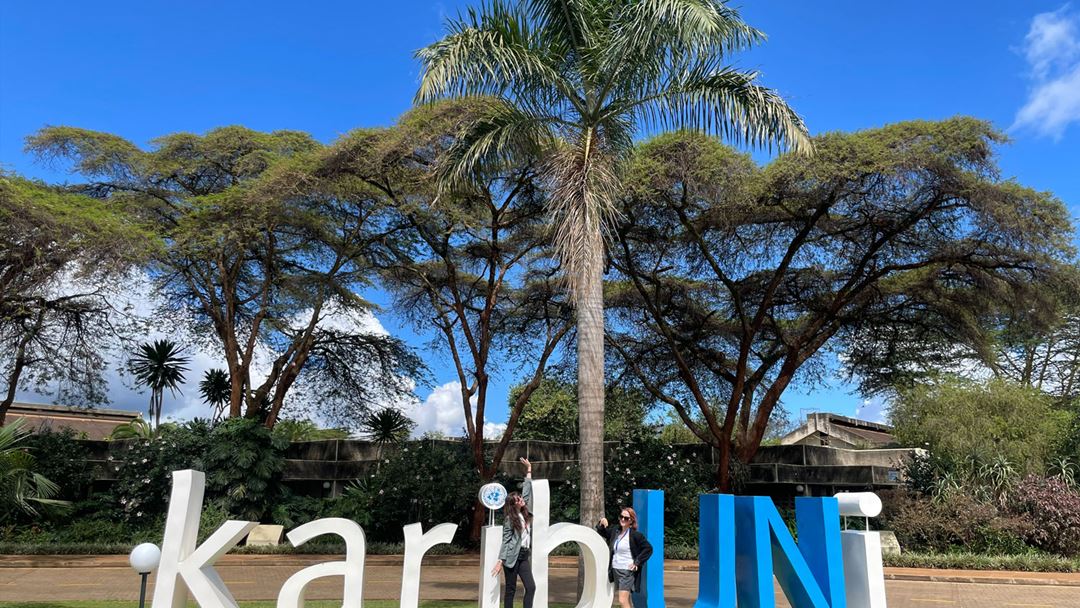Let the third round of negotiations begin – with a Zero Draft as a guide!
November 13th, 2023 – the air is damp in Nairobi, the lines to get through security are long, and the negotiations are starting – this time with what is called a Zero-draft of the future treaty in hand, with five main parts - prepared by the Chair Gustavo Meza-Cuadra Velasquez from Peru with the support of the secretariat. The official name of the meeting of states here in Nairobi this week is the “3rd Session of the Intergovernmental Negotiating Committee to Develop an International Legally Binding Instrument on Plastic Pollution, Including in the Marine Environment” - INC-3 in short. And it’s the third of five meetings to negotiate this treaty to stop plastic pollution, and only one year left to do it in according to the official plan.

Rachel Tiller and Emily Cowan, SINTEF Ocean
We are now back where the negotiations first started – in March of 2022 - at the UNEP headquarters in Nairobi, Kenya (the only UN headquarters in the global south) a mandate was adopted by UN member states to begin negotiations on a treaty to end plastic pollution. SINTEF Ocean Researcher Emily Cowan was here at that time, as she is now, this time together with Chief Scientist Rachel Tiller. The third round of negotiations takes place in the same location. Compared with the negotiations during INC-2 in Paris, France in the spring of 2023, where Cowan and Tiller also participated as observers, we now expect more substantial discussions thanks to the Zero Draft text. This draft text has six parts and appendixes for consideration.
1 – the first part of the treaty will give the history and contextual setting of this global agreement and why we need it in the first place, and reference other relevant conventions that it needs to build on and complement, such as the Convention on Biological Diversity (CBD) and the Paris Agreement for example, and all important definitions of terms.
2 – the second part of the treaty will tackle plastic throughout its life cycle – from the moment it is extracted as a raw material (aka fossil fuel) to its end of life – and this is a large section where one may expect that there will be differences in opinions and heated discussions.
3 – the third part will examine how UN member states will finance, build capacity and transfer technology to ensure this large change that is going to be required if we are to be able to ensure that we make these broad changes to our relationship with plastics.
4 – With a plan for reduction of plastic pollution, and money to ensure that it is possible to implement, the fourth section focuses on mechanisms for how to monitor the life of the treaty to assess how effective it is at reducing plastic pollution.
5 – Finally, global and regional institutions will need to implement the financing, capacity building, technology transfer and monitoring and review of the treaty also need to be established. It is yet to be determined if existing institutions will be used or if new ones will be determined if existing institutions will be used or if new ones will be built.

During the treaty negotiations for a legally binding agreement for sustainable use and protection of biodiversity in areas beyond national jurisdiction (BBNJ), which was adopted in June of 2023, the concept of “form follows function” was oft repeated when discussing how to build a treaty. This saying was coined by Louis Henry Sullivan, the father of the skyscraper, when he said in his 1896 treatise on skyscraper architecture titled "The Tall Office Building Artistically Considered,":
Whether it be the sweeping eagle in his flight, or the open apple-blossom, the toiling workhorse, the blithe swan, the branching oak, the winding stream at its base, the drifting clouds, over all the coursing sun, form ever follows function, and this is the law. Where function does not change form does not change. The granite rocks, the ever-brooding hills, remain for ages; the lightning lives, comes into shape, and dies in a twinkling.
In this same spirit of how Sullivan envisioned that a building’s design had to reflect the social purpose of that particular space, our hope is that the plastic treaty Zero draft is the first step towards a form that enables it to reflect the envisioned purpose of final treaty – which is to end plastic pollution, including in the marine environment. With this as the guide, let the negotiations begin, because, as the Executive Secretary for the Secretariat of the INC, Jyoti Mathur-Filipp, stated in her opening speech: “Nature is suffocating, gasping for breath”.

